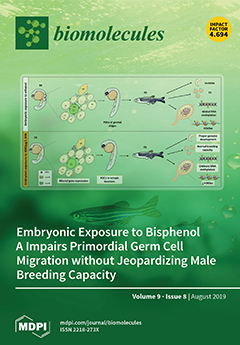Pulmonary exposure to cerium oxide nanoparticles (CeO
2 NPs) can occur either at the workplace, or due to their release in the environment. Inhaled CeO
2 NPs are known to cross the alveolar–capillary barrier and reach various parts of the body, including the vasculature. The anticancer drug cisplatin (CP) causes vascular damage. However, the effects CeO
2 NPs on vascular homeostasis in a rat model of CP-induced vascular injury remain unclear. Here, we assessed the impact and underlying mechanism of pulmonary exposure to CeO
2 NPs on aorta in rats given a single intraperitoneal injection of cisplatin (CP, 6 mg/kg) to induce vascular damage. Six days later, the rats were intratracheally instilled with either CeO
2 NPs (1 mg/kg) or saline (control), and various variables were studied 24 h thereafter in the aortic tissue. The concentration of reduced glutathione and the activity of catalase were significantly increased in the CP + CeO
2 NPs group compared with both the CP + saline and the CeO
2 NPs groups. The activity of superoxide dismutase was significantly decreased in the CP + CeO
2 NPs group compared with both the CP + saline and CeO
2 NPs groups. The expression of nuclear factor erythroid-derived 2-like 2 (Nrf2) by the nuclei of smooth muscles and endocardial cells assessed by immunohistochemistry was significantly augmented in CeO
2 NPs versus saline, in CP + saline versus saline, and in CP + CeO
2 NPs versus CeO
2 NPs. Moreover, the concentrations of total nitric oxide, lipid peroxidation and 8-hydroxy-2-deoxyguanosine were significantly elevated in the CP + CeO
2 NPs group compared with both the CP + saline and the CeO
2 NPs groups. Similarly, compared with both the CP + saline and CeO
2 NPs groups, the combination of CP and CeO
2 NPs significantly elevated the concentrations of interleukin-6 and tumour necrosis factor-α. Additionally, aortic DNA damage assessed by Comet assay was significantly increased in CeO
2 NPs compared with saline, and in CP + saline versus saline, and all these effects were significantly aggravated by the combination of CP and CeO
2 NPs. We conclude that pulmonary exposure to CeO
2 NPs aggravates vascular toxicity in animal model of vascular injury through mechanisms involving oxidative stress, Nrf2 expression, inflammation and DNA damage.
Full article






